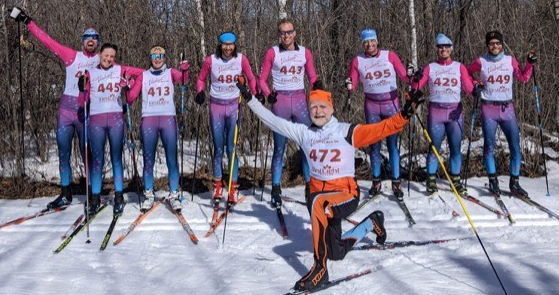After an almost two year hiatus (turns out publishing a book got in the way), I’m back with more analysis from my training log. This time, I’m going to see what the Garmin Connect website can do, pulling from years of my data going back to 2011. Note, I don’t always use my Garmin, especially for easy biking and running to and from work. Otherwise I use it for most workouts and all races.
I’ve had the Garmin 220 since late 2015 and prior to that the Garmin 210 that Erik got me for Christmas in 2010.
I should also establish that the principle three questions in analyzing my training log data are (1) what training makes me ski/run faster? (2) what training makes me ski/run slower? (3) what training is neutral?
It took me a tad to search through the left sidebar of the Garmin Connect website to find meaningful data, but then I happened on the “Reports” tab. On the “Reports” page, on the left side under “Reports” there’s a bunch of things to click on that are then displayed on a graph on the right. The graph on the right can then be changed to "7 days," "4 weeks," "6 months," or "1 year."
 |
| This graph shows my average heart rate per activity from January 26, 2020 to February 22, 2020. The high points correspond to the City of Lakes Loppet Classic Marathon, City of Lakes Loppet Skate Marathon, Mora Vasaloppet 42 km Classic, Minnesota Finlandia 25 km Classic, and Birkie 50 km Skate. |
From here under “All Activities” I found “Total Activity Time” and “Total Distance” that generated some nice bar graphs representing my different activities for the year.
 |
| This bar graph shows my total activity time in 2015, when I ran the Twin Cities Marathon. "Other" is mostly rollerskiing. This year we did a Thanksgiving ski trip to Colorado. |
 |
| Here's my total activity time from this year when I didn't run a marathon. |
 |
| For comparison to total time, this was my total distance in 2015. My August is lower because both year (2015 and 2021) I went on a backpacking trip and did not use my Garmin. |
 |
| And 2021 total distance where I did a lot of rollerskiing in October! |
Moving farther down the Reports on the left, if I clicked “Running” it opened up a new drop down menu that told me information about just my running workouts such as “Average Heart Rate” and “Total Distance.”
 |
| This graph shows my average heart rate for running only activities in September of this year with the one high value being the City of Lakes Half Marathon. |
At the bottom of the “Reports” menu is “Progress Summary.” Clicking on this opens up a new page where I got most of my data. The first view that pops up tells me the number of all my recorded activities, distance, and time spent doing them. It was definitely a bit mind boggling to learned I’d entered almost 25,000 miles of human powered activities into Garmin Connect! Still, this info wasn’t terribly helpful so I kept searching through the different drop down menu options. I most liked to “Group by Year” under the “Progress Summary” option and then pick my activity. Doing this I generated a bunch of data. Note, the fields displayed can be customized on the right side. It’s also possible to customize dates.
 |
| Grouping by year, this shows the above data broken down annually. |
 |
| Here's running by year. |
 |
| Rollerskiing by year. Again, wow, over 6,500 miles of rollerskiing! |
 |
| Classic skiing by year. |
 |
| And skate skiing by year. |
The only other useful left menu option I found is the “Activities.” By going to this tab and loading all my activities, I can quickly check average heart rates for races by searching for specific activity and under "Advanced Settings" choosing “Race” then “Filter Activities.”
 |
| Here I've filtered to find just my skate ski races. |
The best I could get for looking at my intensity or interval training is at the bottom of each specific activity where there’s a tab on the left for “Time in Zones” (this is next to “Stats” and “Laps”) which can show me my time in the different training zones for that specific workout only. There is no way in Garmin that I, or Erik, could find to analyze the intensity/interval training across different workouts or years.
 |
| Heart rate zones for a recent L4 (5 x 3 minutes) classic ski interval workout I did at ABR that also included a couple hours of easy skiing. |
It turns out I’m a bit of a data geek- not surprising given I always liked math. There was something about analyzing this data that was addicting. Even if I didn’t arrive at any great conclusions, the point of this exercise was to explore the Garmin Connect website and see what I could find.
But what I’m really looking for is to compare my time spent doing intervals and heart rates with race results. I should clarify that the most useful information I could get from Garmin Connect would tell me how to ideally train for my best race possible. Unfortunately the system just isn’t set up to compute this data.
Erik tells me I’d have to export my data to Strava, Runalyze, or TrainingPeaks and since that’s beyond the scope of this post, stay tuned!



No comments:
Post a Comment